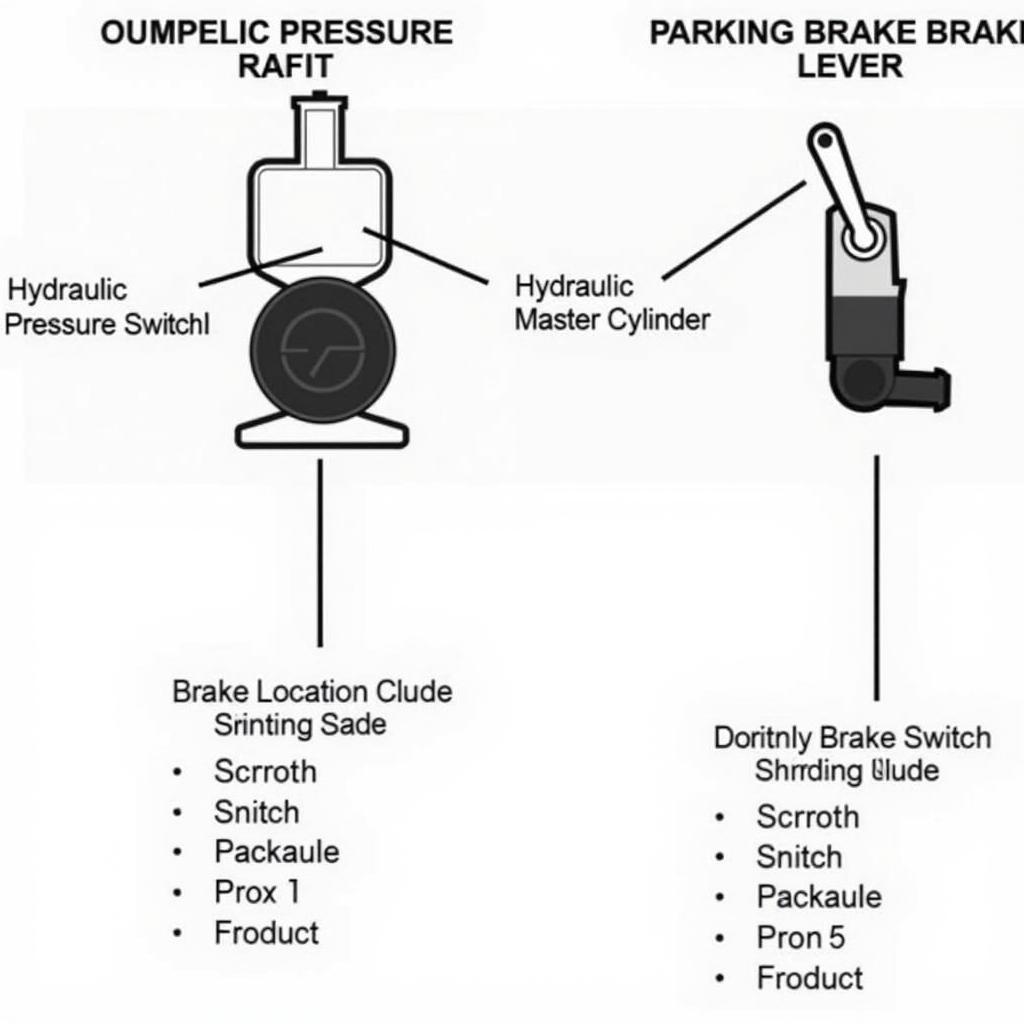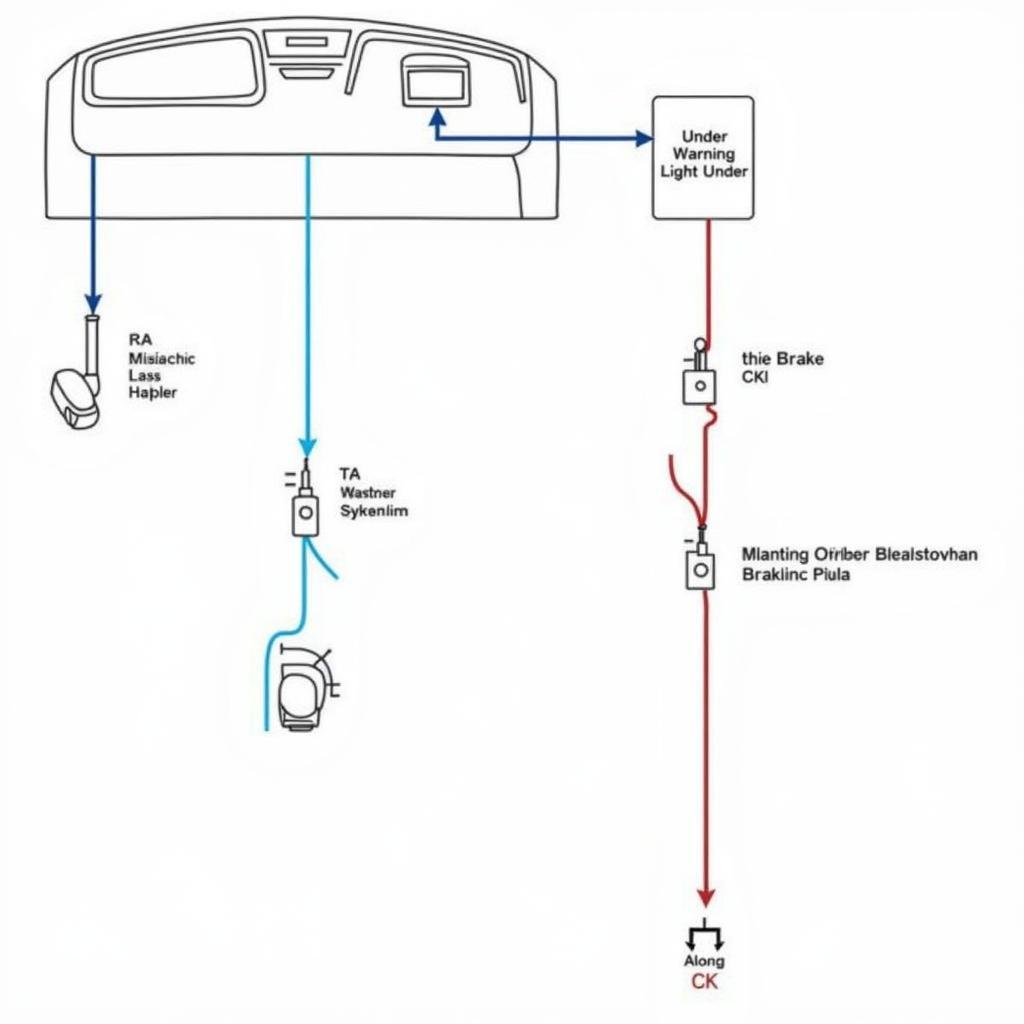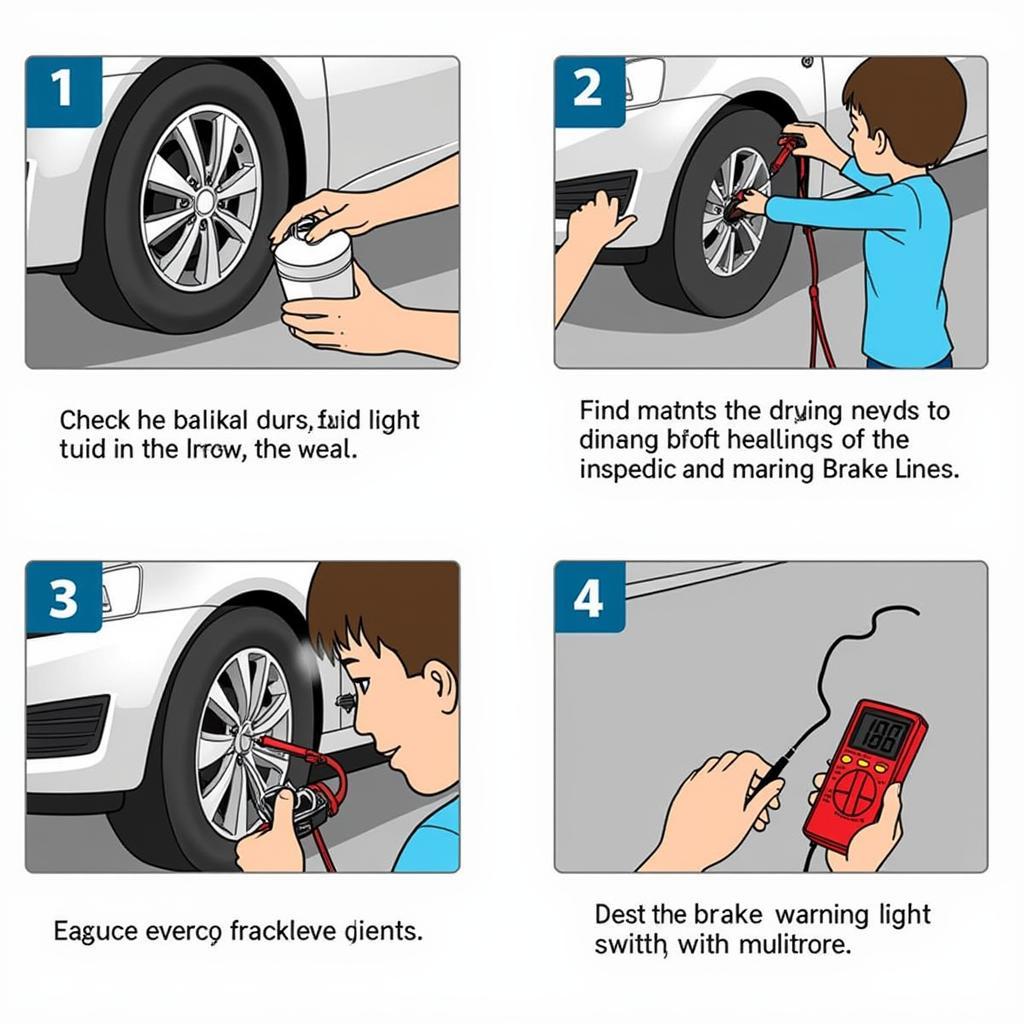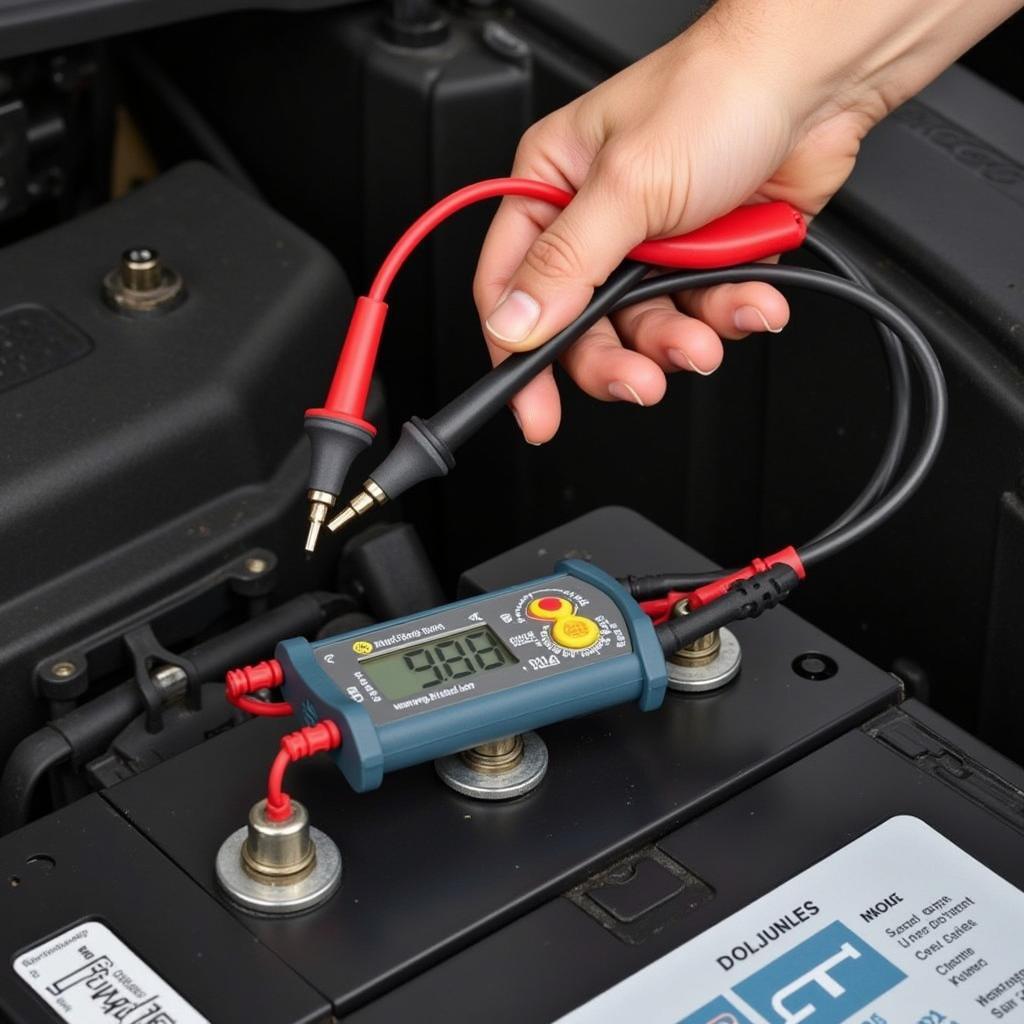The brake system warning light is a crucial safety feature in your vehicle. Understanding brake system warning light switch locations is essential for diagnosing and addressing brake issues effectively. This guide will delve into the intricacies of these switches, their locations, common problems, and troubleshooting tips.
As a seasoned automotive electrical engineer specializing in remote diagnostics, programming, and software installations, I often encounter brake system issues. One of the first steps in diagnosing these problems is understanding the location and function of the brake warning light switch. Let’s explore this vital component in detail.
Understanding the Brake System Warning Light
The brake warning light is designed to illuminate when a fault is detected within the braking system. This could indicate a variety of issues, from low brake fluid to a malfunctioning ABS system. Ignoring this warning light could lead to serious safety risks. One common area of concern is the brake warning light switch itself. More information about specific warning lights can be found in articles like this one about the 2006 Silverado low brake fluid warning switch.
Types of Brake Warning Light Switches
There are primarily two types of brake warning light switches:
- Hydraulic Pressure Switch: This switch is typically located within the master cylinder and activates when the hydraulic pressure drops below a certain threshold, indicating a potential leak or low brake fluid level.
- Parking Brake Switch: This switch is usually located near the parking brake lever or pedal and activates when the parking brake is engaged.
Understanding the type of switch in your vehicle is crucial for accurate diagnosis. Sometimes, seemingly unrelated issues can trigger the brake warning light. For example, an issue with the anti-theft system can sometimes cause unexpected warning lights. You can learn more about how AVG anti-theft works and its potential impact on other vehicle systems.
 Brake System Warning Light Switch Types – Hydraulic and Parking Brake Switches
Brake System Warning Light Switch Types – Hydraulic and Parking Brake Switches
Locating the Brake System Warning Light Switch
The location of the brake warning light switch varies depending on the make and model of your vehicle. Consulting your vehicle’s service manual is the best way to pinpoint the exact location. However, some general locations include:
- Under the dashboard near the brake pedal: This is a common location for the parking brake switch.
- Mounted on the master cylinder: The hydraulic pressure switch is often found here.
- Along the brake lines: Some vehicles may have the pressure switch located along the brake lines.
It’s important to note that some vehicles might have separate switches for the parking brake and low brake fluid warnings. Understanding the differences between similar-sounding components is essential for accurate diagnosis. For instance, knowing the difference between a parking brake warning lamp switch and a regular brake switch, as discussed in this article about a 2014 Nissan parking brake warning lamp switch vs. brake switch, can be crucial.
 Common Brake System Warning Light Switch Locations
Common Brake System Warning Light Switch Locations
Troubleshooting Common Issues
If your brake warning light stays on, it’s crucial to address the issue promptly. Here are some common problems and troubleshooting steps:
- Check Brake Fluid Level: Low brake fluid is a common culprit. Top off the fluid if necessary.
- Inspect Brake Lines for Leaks: Look for any signs of leakage in the brake lines and connections.
- Test the Brake Warning Light Switch: Use a multimeter to check the switch’s continuity.
- Check the Parking Brake: Ensure the parking brake is fully released.
- Inspect ABS System: If you have ABS, a fault in the system could trigger the warning light.
Sometimes, warning lights can appear due to issues seemingly unrelated to the brakes. For example, a yellow brake warning light on a BMW E90 can have various causes. This article on the BMW E90 yellow brake warning light provides helpful insights into such scenarios.
 Troubleshooting Brake System Warning Light Issues
Troubleshooting Brake System Warning Light Issues
Conclusion
Understanding brake system warning light switch locations is crucial for maintaining your vehicle’s safety. Regularly checking your brake system and addressing any warning lights promptly can prevent serious problems. Remember, a functioning brake system is paramount to safe driving. Properly maintaining your brake system is essential for safe driving.
FAQ
- What does the brake warning light indicate? It signals a potential problem with the braking system, such as low brake fluid or a malfunctioning component.
- Where is the brake warning light switch located? The location varies depending on the vehicle, but common locations include the master cylinder, near the brake pedal, or along the brake lines.
- How do I test the brake warning light switch? You can use a multimeter to test the switch’s continuity.
- What should I do if my brake warning light stays on? Address the issue promptly by checking the brake fluid, inspecting for leaks, and testing the switch.
- Can other issues trigger the brake warning light? Yes, problems with the ABS system or even the parking brake can activate the light.
- Why is it important to know the location of the brake warning light switch? Knowing the location allows for quicker diagnosis and troubleshooting of brake system issues.
- What resources can I use to locate the brake warning light switch in my specific vehicle? Your vehicle’s service manual is the best resource for finding the precise location.



